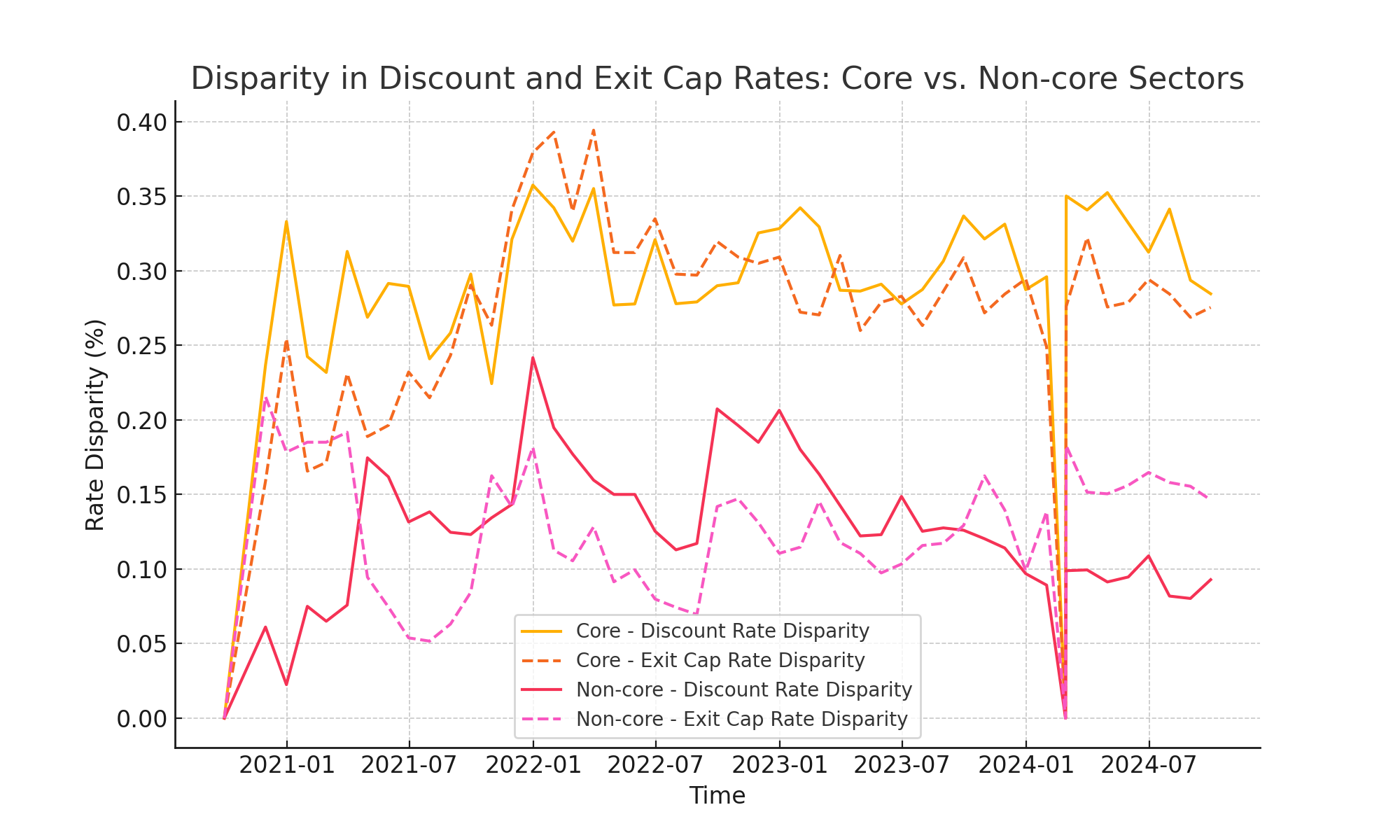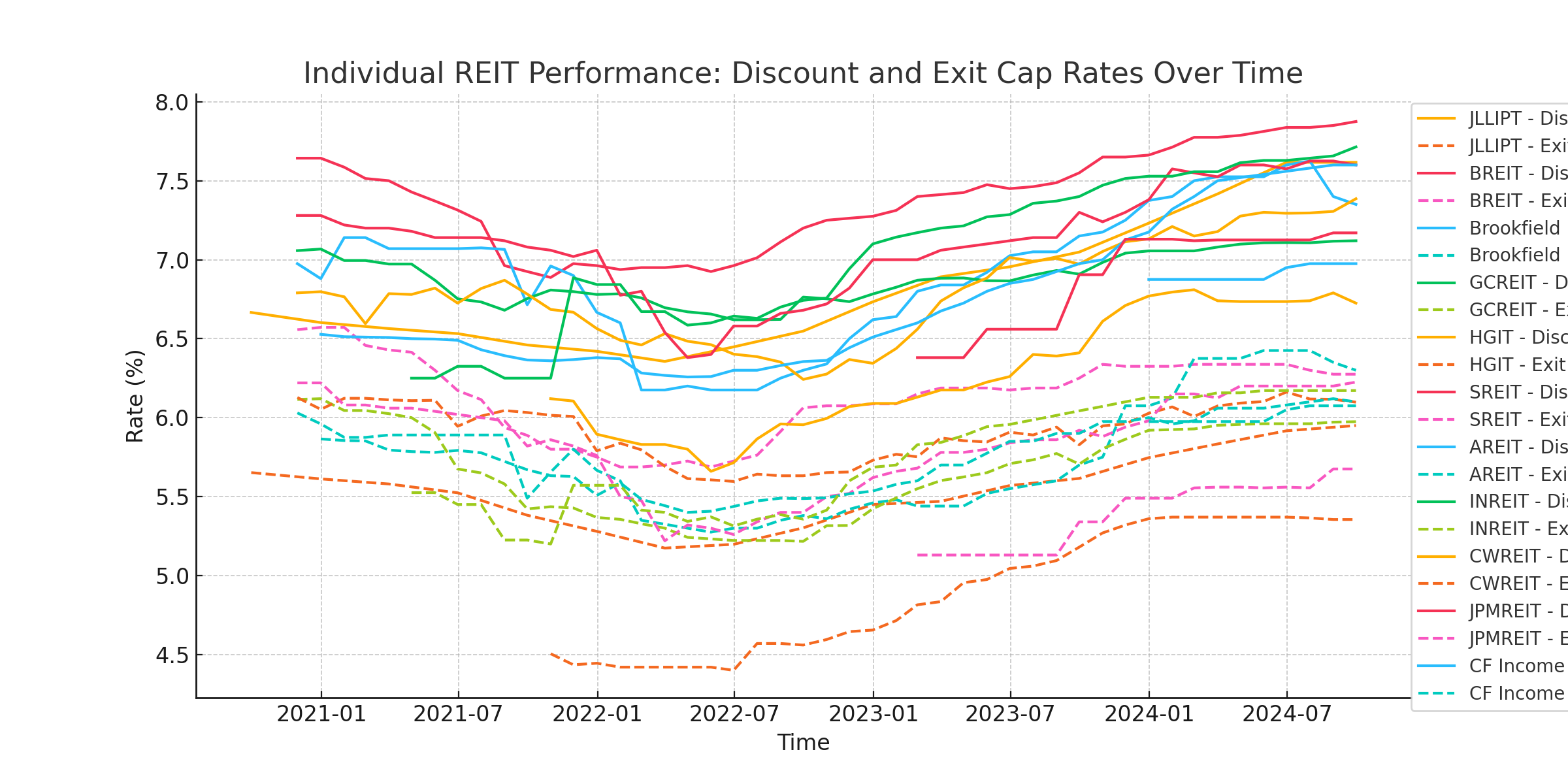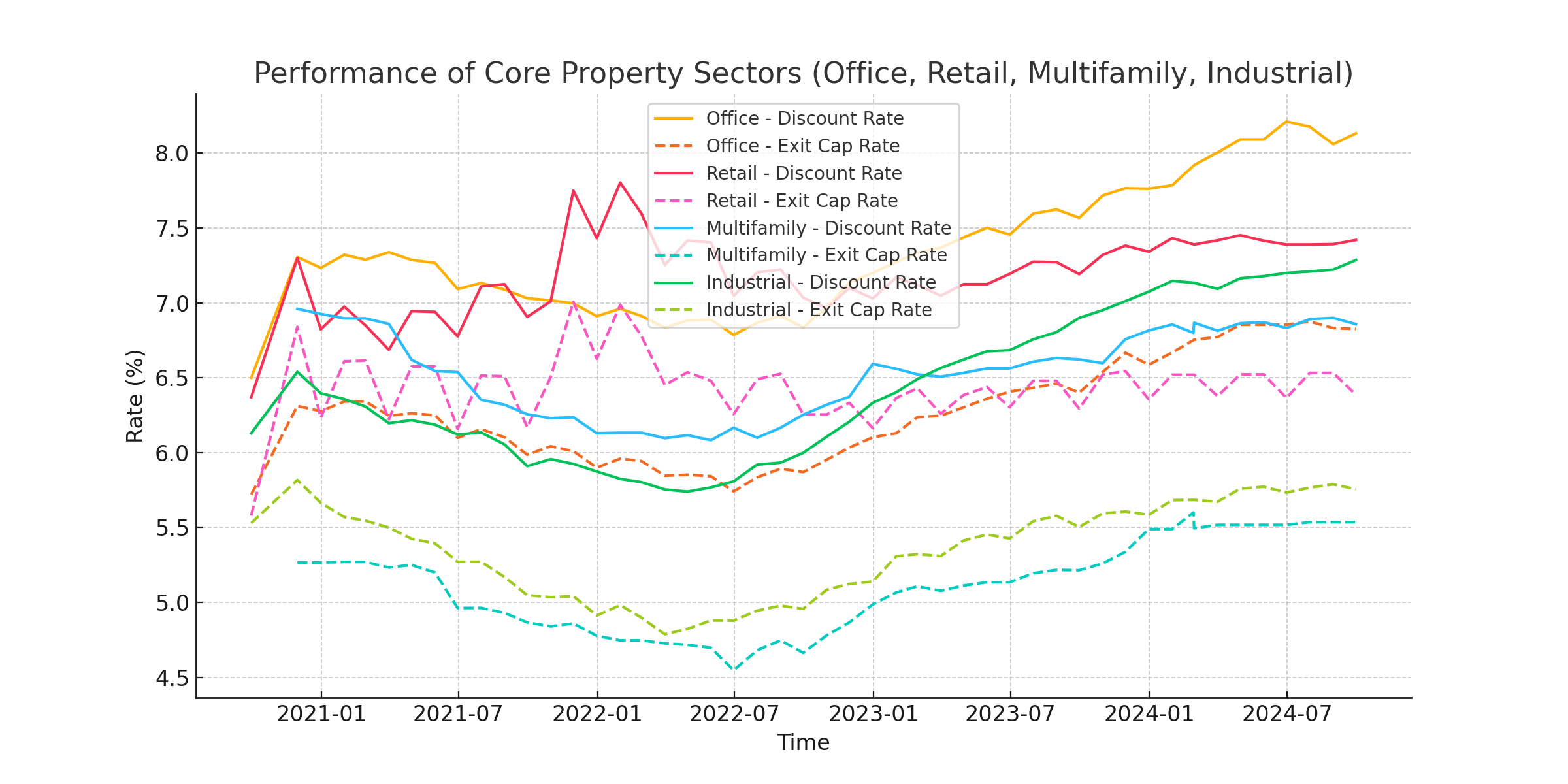
Analyzing REIT Performance and Sector Disparities: Cap Rate and Discount Rate Trends
Commercial real estate valuation hinges on critical metrics like discount rates and exit cap rates. By analyzing data from Public Non-Listed REITs (PNLRs) across core and non-core sectors, we gain valuable insight into market dynamics, risk perception, and investor sentiment. Our latest analysis focuses on disparities among REITs and sector performance, offering key takeaways for investors and appraisers.
Sector Disparities: Core vs. Non-Core Performance
Key Findings:
- Core Sectors (Office, Retail, Multifamily, Industrial) show greater disparity in discount and exit cap rates compared to non-core sectors.
- Non-Core Sectors (Life Sciences, Student Housing, Single Tenant) exhibit narrower dispersion in rate assumptions, reflecting more consistency across assets.
In the most recent period (Q3 2024), core sectors reported an average discount rate disparity of 0.28%, compared to just 0.09% for non-core sectors. This trend indicates diverging REIT strategies within core sectors, driven by differences in portfolio quality, geographic exposure, and tenant composition.

Individual REIT Performance: Variability in Assumptions
REITs operating within the same sector show noticeable differences in their valuation assumptions. The analysis of key REITs (HGIT, INREIT, JLLIPT, JPMREIT, SREIT) reveals the following:
- INREIT and JLLIPT report higher discount rates (above 7.6%) than sector averages, signaling conservative valuation practices.
- JPMREIT consistently maintains the lowest exit cap rate (5.67%), suggesting a focus on high-quality assets or less risky portfolios.
- SREIT shows increasing exit cap rates, pointing to potential risk reassessment or asset repositioning.

Sector-Specific Observations
- Multifamily: Cap rates remain compressed, reflecting strong investor demand and robust market fundamentals.
- Industrial: Discount rates show minimal fluctuation, indicative of sustained confidence in logistics and warehousing sectors.
- Office: Reports the highest disparity in discount rates, driven by uncertainty around remote work and long-term office space demand.
- Retail: Higher exit cap rates persist, underscoring the continued challenges faced by brick-and-mortar tenants.

Key Takeaways for Investors and Appraisers
1. Monitor Sector Disparities: Core sectors display greater variability, necessitating detailed analysis of REIT-specific assumptions.
2. Identify Mispriced Opportunities: Understanding deviations in discount and exit cap rates can help investors identify undervalued assets or avoid overpriced markets.
3. Align Valuations with REIT Data: Valuation professionals can refine valuation models by integrating REIT-specific data, ensuring greater accuracy in reflecting current market conditions.
The disparities observed across core and non-core REIT sectors reflect broader economic factors, asset quality, and evolving investor strategies. By closely tracking these metrics, investors and appraisers can enhance their decision-making processes, identifying opportunities and mitigating risks in an evolving commercial real estate landscape.
Powered by Froala Editor


 2025-04-07 23:29:35
2025-04-07 23:29:35